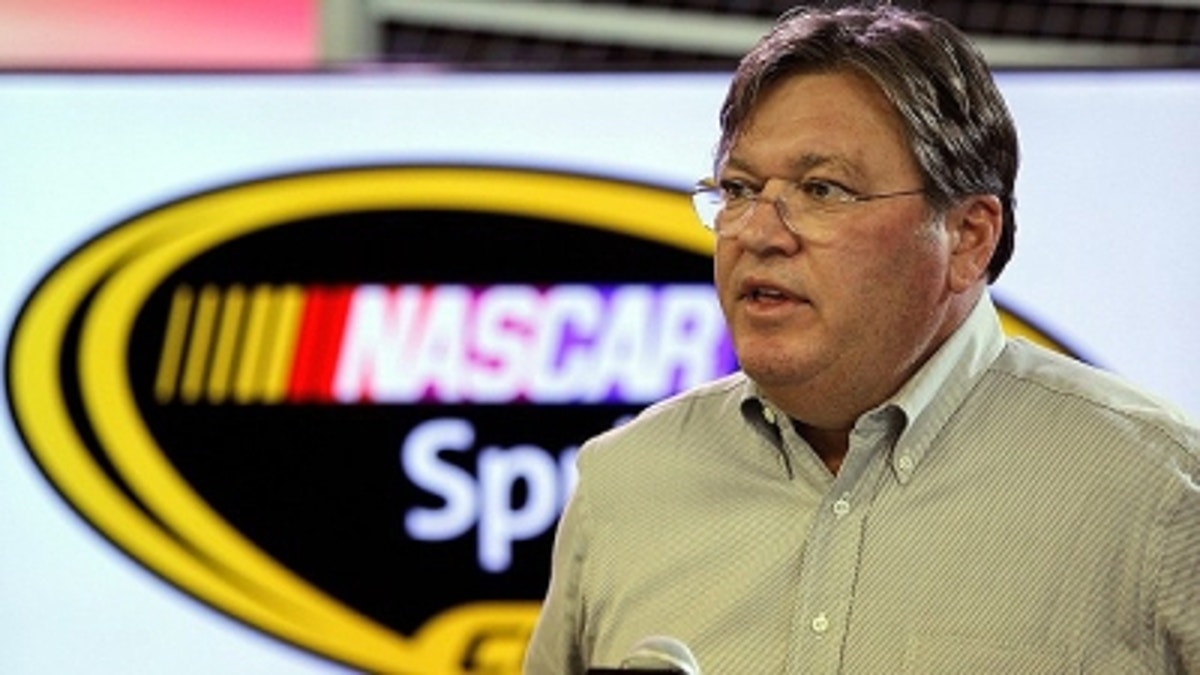
NASCAR’s new Generation-6 Sprint Cup race cars — the Chevrolet SS, Ford Fusion and Toyota Camry — are making their competition debuts during Daytona Speedweeks.
The G-6 cars are distinctive in that each looks much more like their production variants and all three cars are instantly recognizable, unlike the much more generic cars raced from 2007-12.
They are also unique in that the respective manufacturers played a much more active design role with these cars. So far, the G-6 cars have earned positive reviews from drivers, fans and the media.
In an exclusive interview with SPEED.com, NASCAR Vice President of Competition Robin Pemberton talked about the G-6 cars and how they came to be.
Q: Were you surprised the manufacturers wanted to be more active in the design process?
Pemberton: No. It goes back to 2009. It was really based on the fact that they were working on the Nationwide car already and we were working on the (Sprint Cup) update for 2011 with the lower front fascia. So while those projects were going on, there was a group of manufacturer’s engineers and us at NASCAR that were already talking about that. Everybody thought we’d head down that path.
Q: How hard was it to get everyone to trust each other and work together?
Pemberton: It wasn’t very hard, because we’d already worked on the new engine platform six or seven years ago, we’d already done the Nationwide car. So really, it was just taking that to the next level and trying to really increase the detail in that.
What was nice about the whole project, is because along the way we were successful with the Nationwide project, more mainstream engineering was put in play by the manufacturers. I think they did a much, much better job — more in-depth throughout the companies and more engaged.
Q: Does this become the model for how you work together in the future?
Pemberton: It’s the way we have been working together for the last five or six years. And as we move forward, it will continue to go through different cycles, based on where we need to be to be relevant, from the look of the car to the engine, what it takes there. What types of cars we run, what size cars we run, all of those things. What we’ve been doing the last 2 ½ years is very similar to what we had been doing, but there was way more manpower put to it this time.
Q: When did you know you had hit your targets with the G-6?
Pemberton: Along the way, we as a group kept rejecting our own work. You get done and you’d say, “Boy, we can be better.” And not all the cars were done at the same time by all the manufacturers. So along the way, the product just kept getting improved and improved and improved. But there was a time late last summer where we were close enough that in order to meet our release date, we really had to push this thing into the field and get racing on it.
Q: How much work is left on fine-tuning these cars?
Pemberton: I think the way that we are positioned is we’ll continue to do maintenance. And what I mean by that is working with our groups … If there are things that can be put into motion that are good for all and benefit all in a proper time frame, we will continue to work on small things. It’s about components and competition. You know that there are things ahead of you to work on, but you don’t know what they are right now. And we’re not done. We are working on things to develop and add to this car now, even though we’re already racing.
Q: What’s the reaction to these cars been so far?
Pemberton: Pretty good. I think it’s been overwhelmingly positive. I think it will be Monday or Tuesday when you have a chance to digest everything that happened on Sunday, but all in all, everything looks to be promising.
Tom Jensen is the Editor in Chief of SPEED.com, Senior NASCAR Editor at RACER and a contributing Editor for TruckSeries.com. You can follow him online at twitter.com/tomjensen100.
